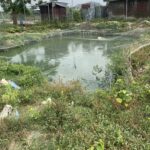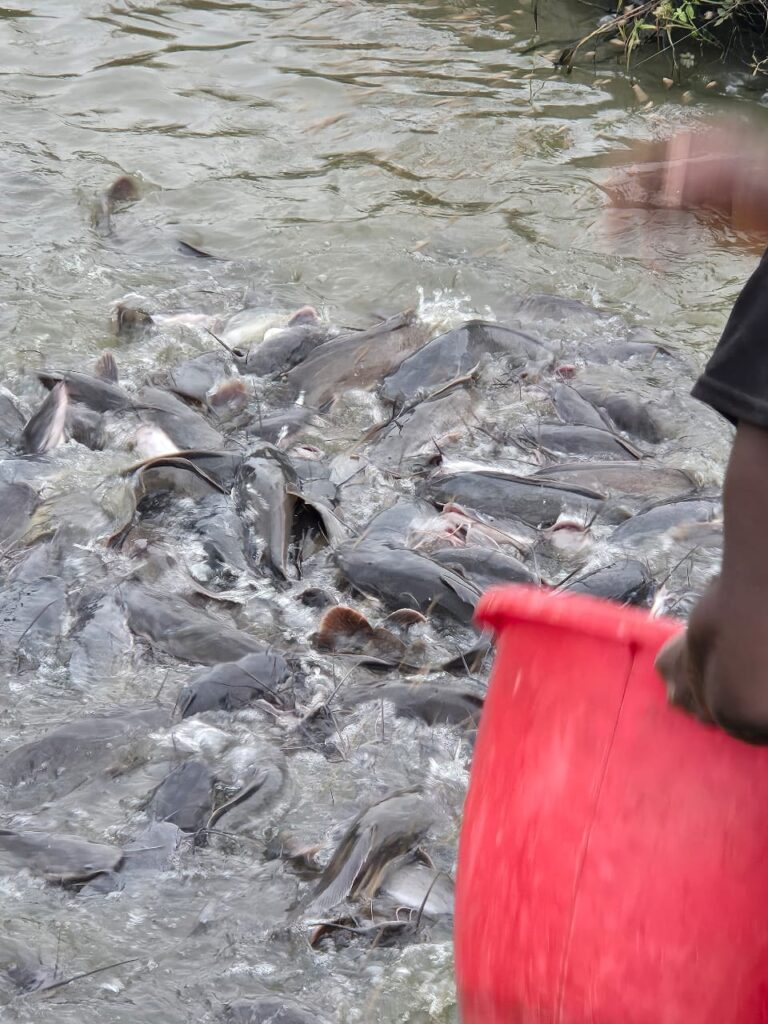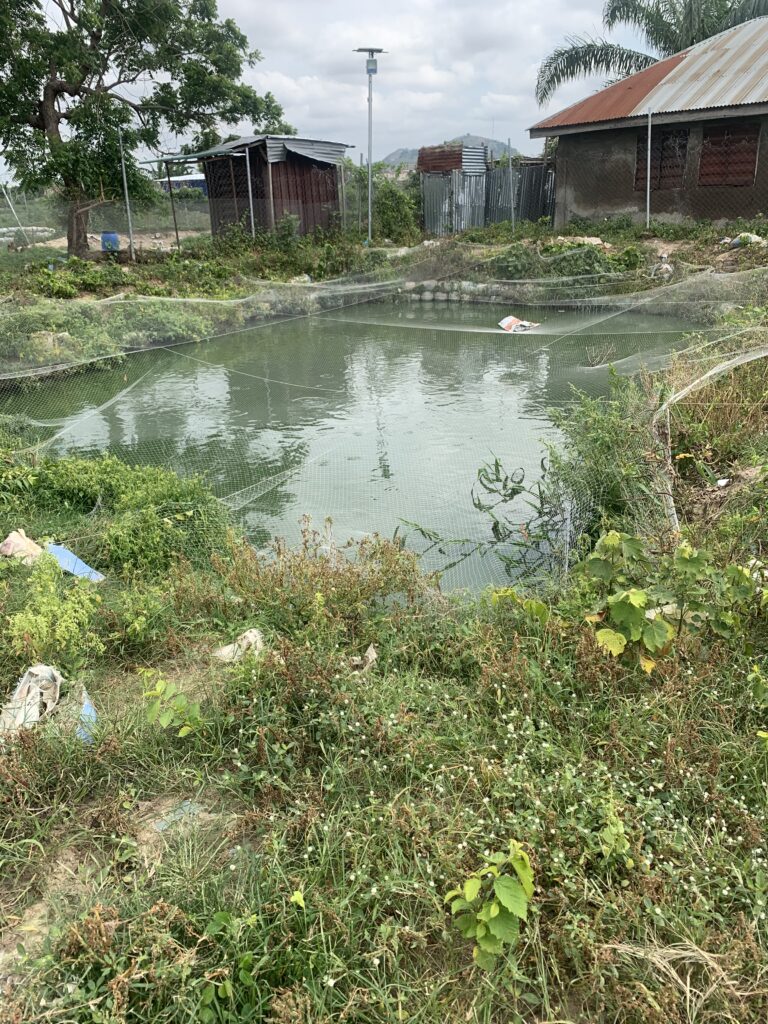Feeding your fish with high-quality, nutrient-rich feed is one of the most important steps to ensuring rapid growth, healthy stock, and a profitable fish farming business. For many farmers, buying commercial fish feed can be expensive and sometimes inconsistent in quality. That’s why learning how to formulate your fish feed at home can save costs, …
Feeding your fish with high-quality, nutrient-rich feed is one of the most important steps to ensuring rapid growth, healthy stock, and a profitable fish farming business. For many farmers, buying commercial fish feed can be expensive and sometimes inconsistent in quality.
That’s why learning how to formulate your fish feed at home can save costs, improve feed efficiency, and give you control over the nutritional content of your feed. In this guide, we’ll walk you through the ingredients, process, tools, and tips needed to create balanced, homemade fish feed.
Understanding Fish Nutrition
Before you start mixing ingredients, it’s important to understand what a fish needs for proper growth. A well-balanced fish diet must include
Protein (30–40%)
-
The most important component for muscle development and growth.
-
Common sources: fish meal, soybean meal, blood meal, groundnut cake
Carbohydrates (20–30%)
-
This provides energy for movement and metabolism.
-
Sources: maize, cassava flour, wheat bran
Fats & Oils (5–10%)
-
It supplies essential fatty acids and helps with nutrient absorption.
-
Sources: fish oil, palm oil
Vitamins & Minerals
-
It strengthens the immune system and supports overall development.
-
Sources: premix, salt, bone meal
Fiber
-
This helps aid digestion and keeps the gut healthy.
-
Source: wheat bran, rice husk (in small quantities)
Common Ingredients for Fish Feed
| Ingredient | Purpose | Available Locally? |
|---|---|---|
| Fish Meal | High-quality protein | Yes (imported/local) |
| Soybean Meal | Protein, energy | Yes |
| Maize/Corn | Energy | Yes |
| Groundnut Cake | Protein | Yes |
| Cassava Starch | Binder | Yes |
| Wheat Bran | Fibre, filler | Yes |
| Palm Oil | Fats | Yes |
| Bone Meal | Minerals | Yes |
| Vitamin Premix | Nutrient boost | Yes (vet stores) |
Sample Fish Feed Formula (100kg Grower Feed)
This example is suitable for catfish growers (150g–600g):
| Ingredient | Quantity (kg) |
|---|---|
| Fish meal | 20 kg |
| Soybean meal | 25 kg |
| Groundnut cake | 15 kg |
| Maize | 20 kg |
| Wheat bran | 10 kg |
| Bone meal | 5 kg |
| Vitamin/mineral mix | 2 kg |
| Cassava starch (binder) | 3 kg |
Tools & Equipment You’ll Need
-
Measuring scale: This is used to get the ingredient ratios right before making use of them.
-
Grinder or hammer mill: This is used to crumble the dry ingredients.
-
Mixer: It is used for uniform blending (a shovel can be used for a small-scale production).
-
Pelletizer or hand mould: This is needed to shape the feed.
-
Drying rack or tray: This is used for sun-drying the pellets
-
Airtight bags or containers: After production, you need to keep the feed in a container or airtight bags for safe storage
If you don’t have a pelletizer, you can hand-roll moist feed into small balls and sun-dry them.
Step-by-Step Process to Make Fish Feed at Home
-
Weigh and prepare ingredients according to your chosen formula.
-
Grind dry ingredients (e.g., maize, GNC, SBM) to a fine powder.
-
Mix all powders thoroughly in a clean container or basin.
-
Add binder (cassava starch) and a little warm water gradually.
-
Mix until you achieve a soft, dough-like texture.
-
Pelletize or mould the feed using your equipment or hands.
-
Dry the pellets in sunlight or with low heat for 2–3 days.
-
Store the dried feed in a cool, dry, airtight container.
Best Practices for Better Results
-
Use fresh ingredients only—mouldy feed can harm fish.
-
Label and date your feed to track shelf life (max 30–45 days).
-
Test feed performance on a small batch of fish before scaling.
-
Maintain hygiene to avoid feed contamination.
-
Avoid overfeeding. Monitor feed conversion ratio (FCR).
Benefits of Making Your Fish Feed
-
Reduces feeding costs by 30–50%
-
Improves feed quality and consistency
-
Can be tailored to fish size and growth stage
-
Opportunity to start a small-scale feed business
FAQs
Q: Can I make floating fish feed at home?
A: Yes, but you’ll need an extruder machine to puff the pellets. Most homemade feeds without this machine will sink.
Q: How long can I store homemade fish feed?
A: Up to 30–45 days in a cool, dry, airtight container. Avoid moisture at all costs.
Q: Can I use poultry feed for fish?
A: No. Poultry feed lacks the proper amino acid and fat profile needed by fish.
Conclusion
Formulating nutrient-rich fish feed at home is an empowering skill for every fish farmer. Not only does it help you reduce dependency on commercial feed, but it also gives you full control over the health and performance of your stock.
With local ingredients, basic tools, and a good formula, you can produce high-quality feed that boosts your fish growth, saves you money, and grows your farm’s success.
If you don’t want to go through all these steps of making the feed yourself, you can reach out to us for your fish feed and other agricultural produce through our contact page to book a visit or an appointment.






